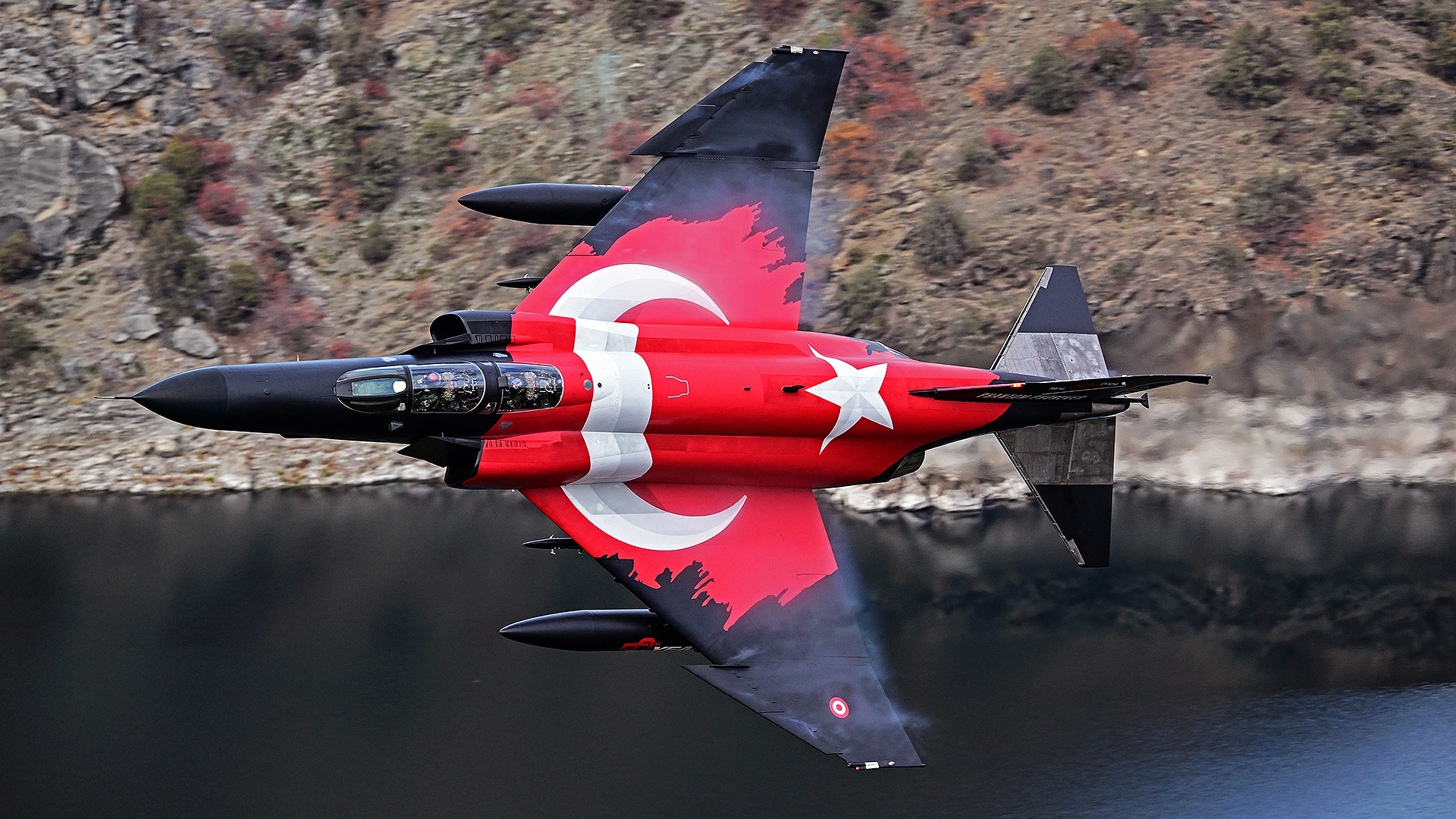Turkey is celebrating half a century of operations with the legendary F-4E Phantom fighter, with a spectacular event showcasing close-quarters fly-bys, as well as an ‘elephant walk’ at the type’s last main operating base in the country. While the days of the Turkish ‘Rhino’ have been numbered for some time, the turbulent nature of the country’s fighter force means the jets have shown remarkable longevity and are still important frontline assets.
The 50th-anniversary event for the Turkish Air Force F-4E took place over the weekend at Eskişehir in northwestern Turkey, where the local air base is home to the service’s squadron flying the Phantom — 111 Filo “Panter.” The occasion was marked in a suitable style for such a charismatic jet — and one that is no stranger to very low-level flying around the Anatolian region.

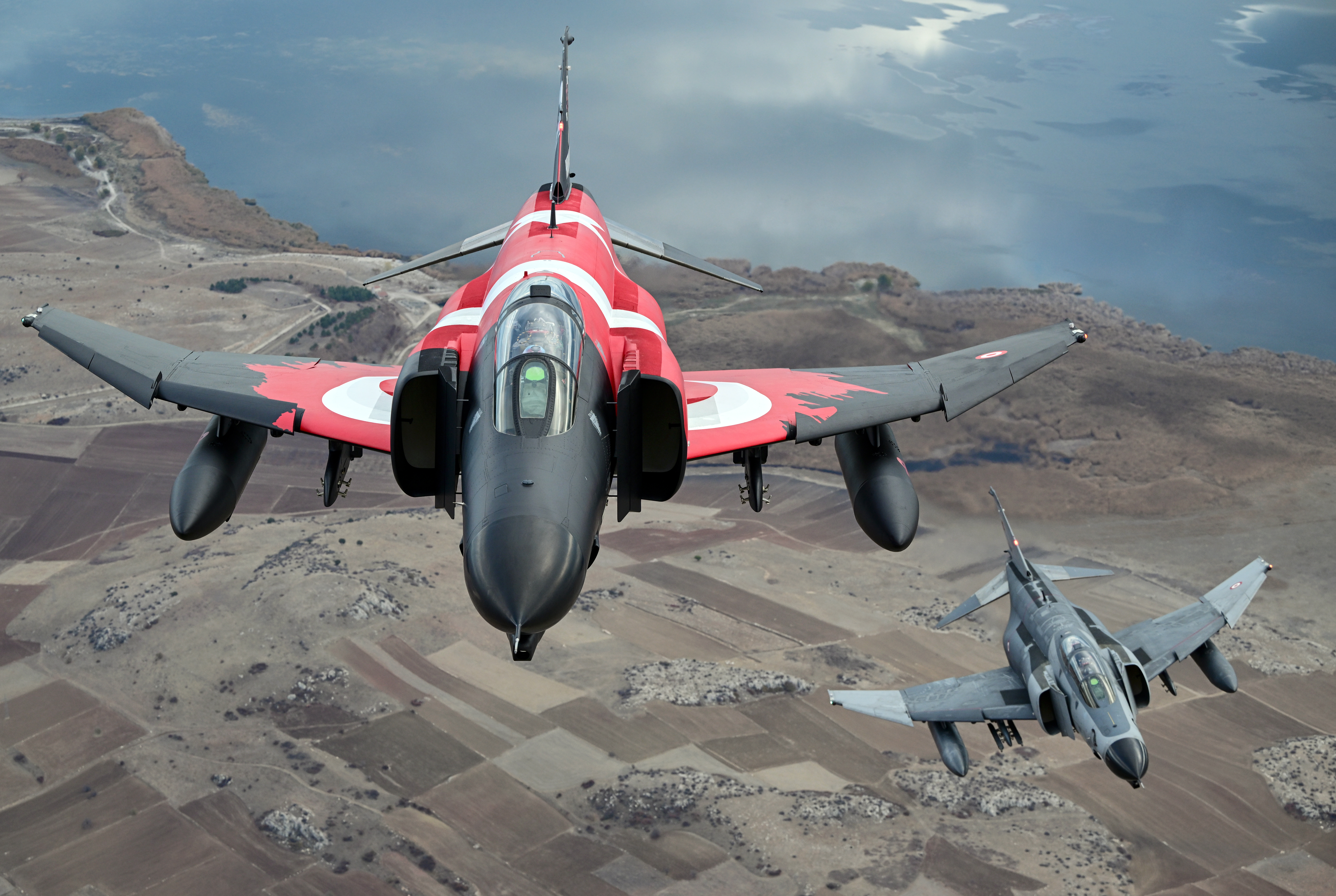
At the center of this was specially painted F-4E serial number 77-0303, in a red and black anniversary scheme. The upper sides of the jet carry a huge Turkish flag, while the belly is painted with the famous “Spook” character found across the global Phantom community ever since it first appeared in the late 1950s.
Most dramatically, on Saturday, Nov. 16, the anniversary jet and at least one other standard-painted F-4E performed high- and low-speed passes down a river valley, roughly a two-and-a-half-hour drive from the base. This provided gathered photographers and eyewitnesses with a never-to-be-forgotten experience highlighting the raw power of this classic Cold War jet.

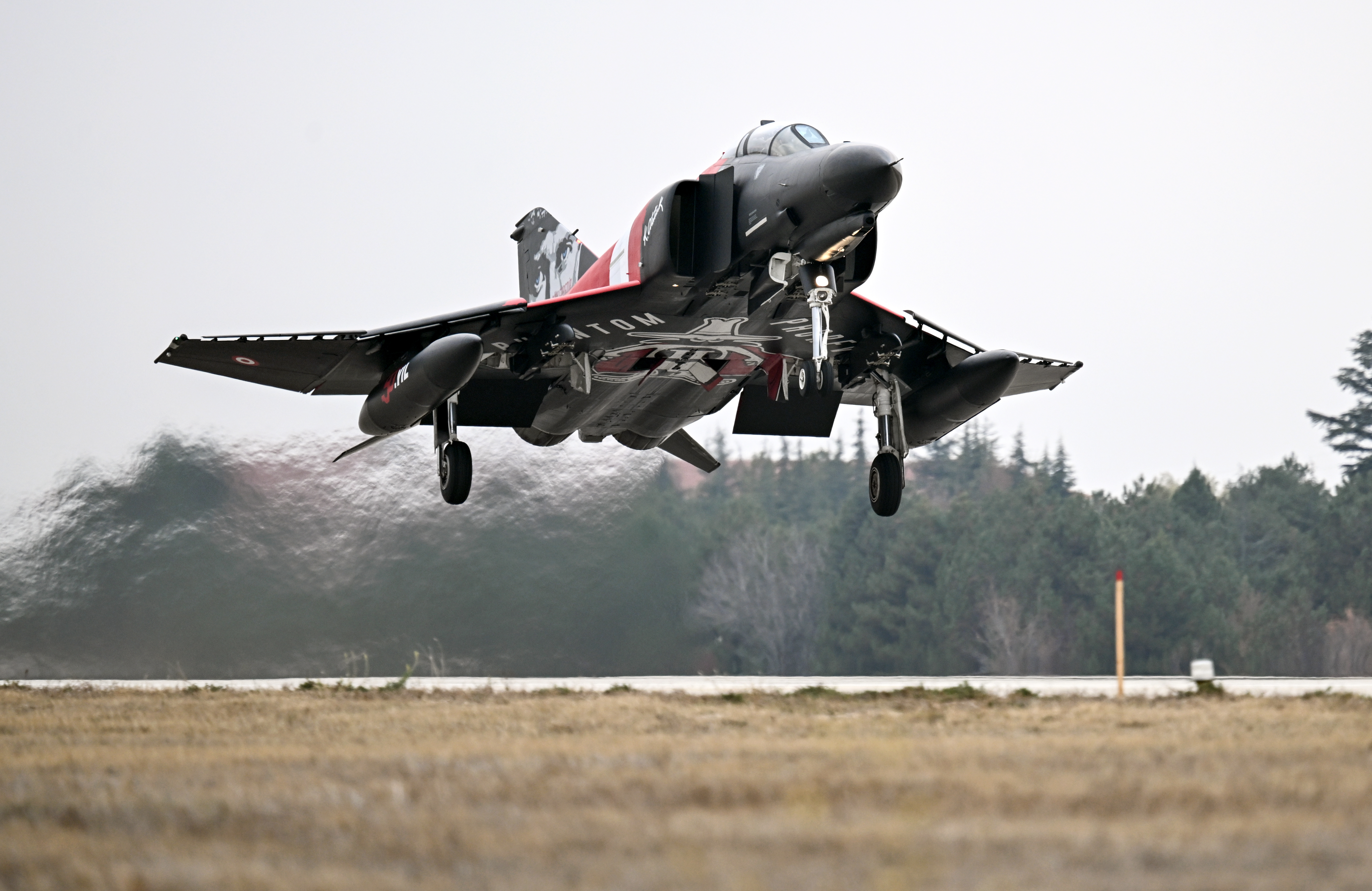
Videos of the jets tearing down the valley were provided to TWZ by aviation photographer Duncan Monk, who made the trip to Turkey from the United Kingdom for this event.
On the afternoon of Sunday, Nov. 17, the anniversary jet got airborne from Eskişehir as part of a four-ship, making several fly-pasts over the base. In the meantime, another six F-4Es taxied from various hardened aircraft shelters to the other end of the runway. When the four-ship landed, they all formed up on the ground to perform an elephant walk — an airpower exercise designed to demonstrate the readiness of large numbers of aircraft, typically in anticipation of a major contingency, but also for commemorative purposes.


The story of the F-4E with the Turkish Air Force, or Türk Hava Kuvvetleri, dates back to June 1974, when the first of an initial batch of 40 of the jets began to arrive in the country, ordered under the Peace Diamond I program. The deliveries were interrupted by an arms embargo imposed after the Turkish invasion of Cyprus that same year.
A follow-on order in 1977 comprised 32 more F-4Es and eight RF-4Es for reconnaissance duties, although the last of the Turkish ‘Recce Rhinos’ were retired in 2015. Several more batches of former U.S. Air Force F-4Es were also obtained, with a total of 233 Phantoms of both versions eventually going onto the Turkish Air Force’s books. Such was the F-4’s popularity that examples were still being accepted in the early 1990s, by which time the more advanced F-16 was well established in service.
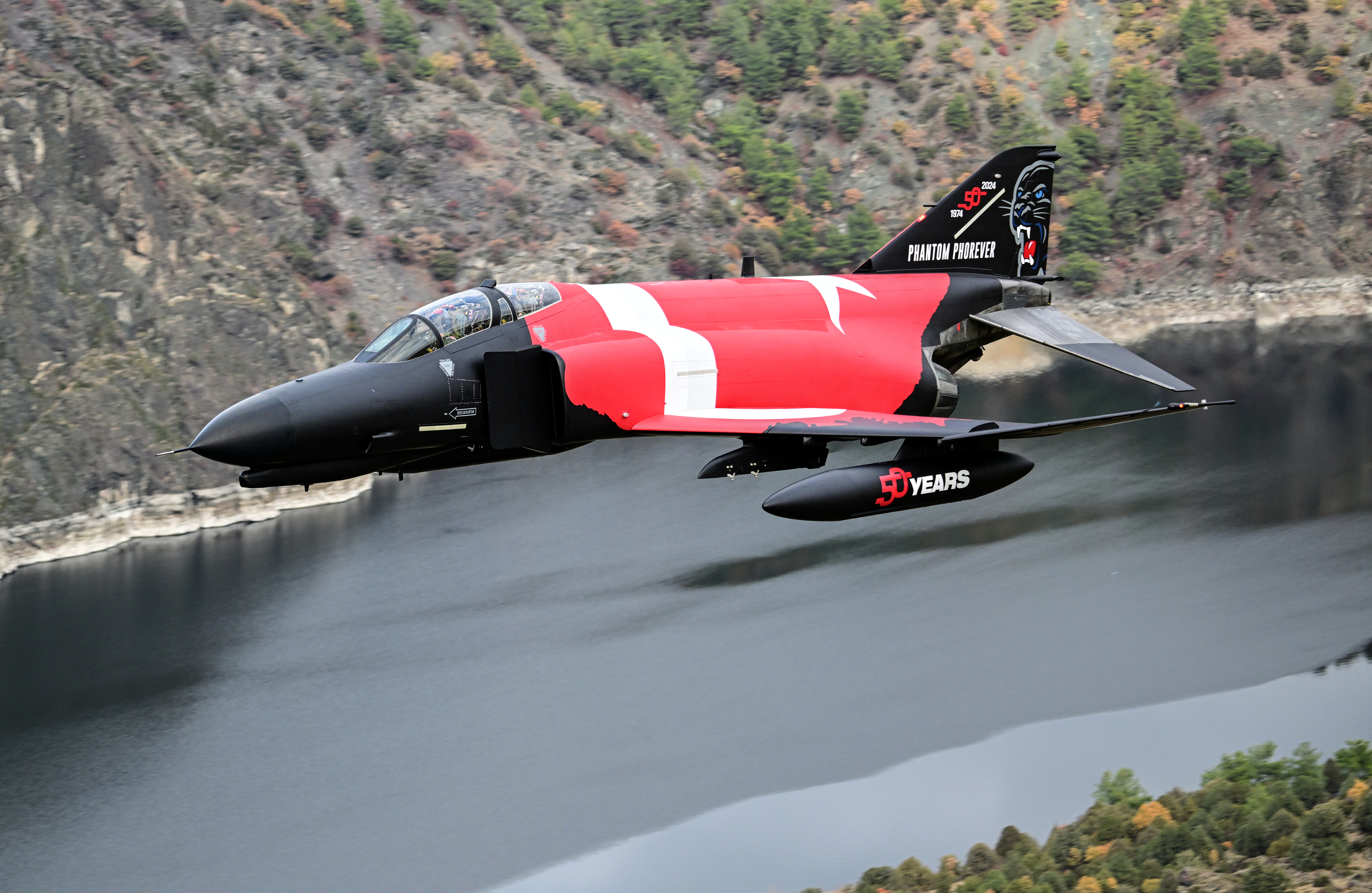
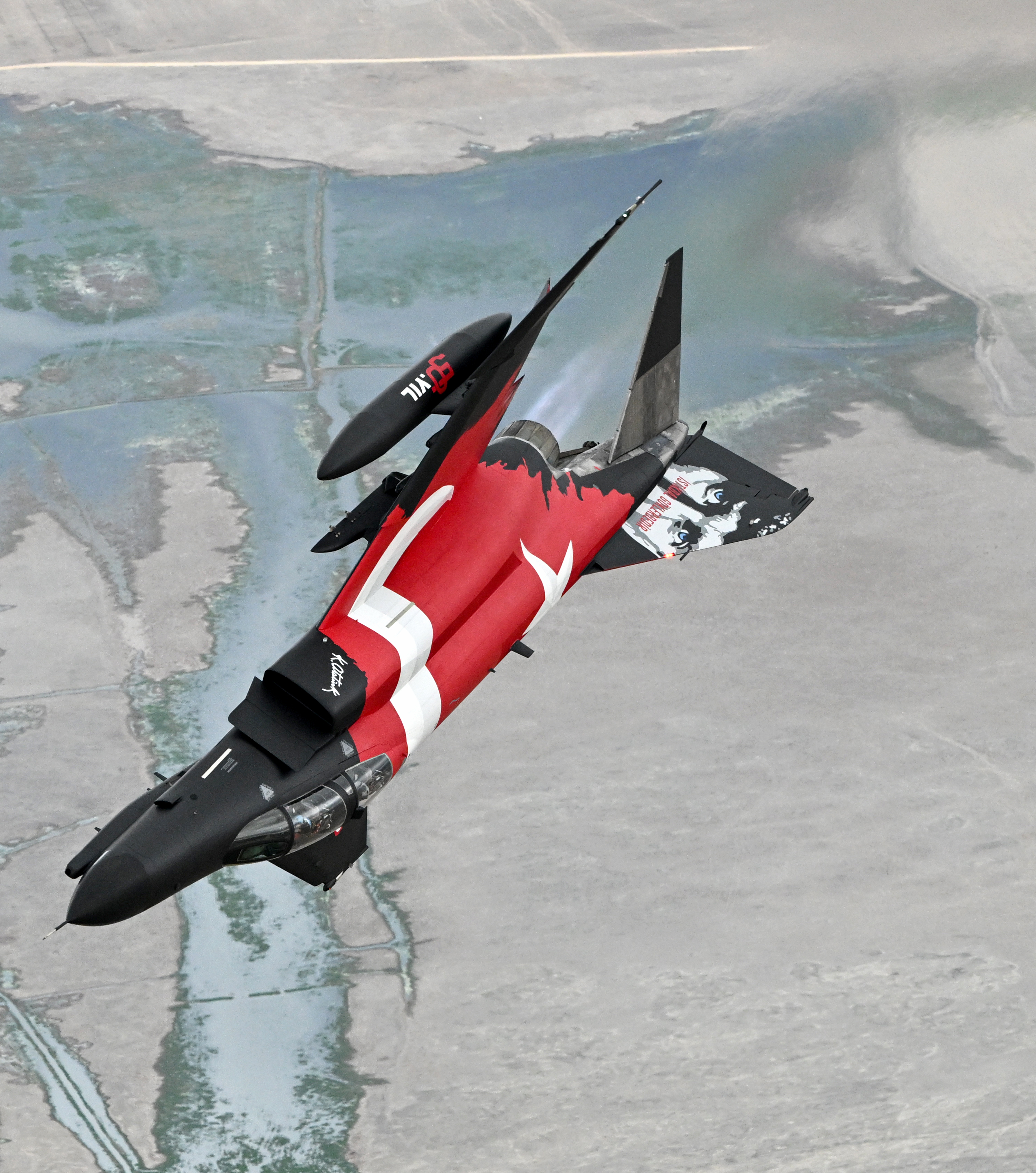
A total of 54 Turkish Phantoms underwent a major mid-life upgrade, which brought them up to the F-4E Terminator 2020 standard, which you can read more abut here. The modernization was led by Israel Aircraft Industries (IAI) and included structural and avionics work. The upgraded avionics include an Elta EL/M-2032 multi-mode radar, digital glass cockpit, wide-angle head-up display (HUD), and hands on throttle and stick (HOTAS) controls.
The Terminator’s armory is also notably expanded, with weapons now including the Israeli-made Popeye standoff missile, as well as the indigenous Roketsan SOM for use against land and sea targets. Other stores include the HGK 500-pound INS/GPS-guided bomb, KGK 500-pound or 1,000-pound glide bomb, and the LGK-82 — an indigenous version of the 500-pound GBU-12 laser-guided bomb.


The name of the Terminator 2020 indicated that it was expected to remain in service until around 2020, but fate has determined that the Turkish F-4E should serve a while longer. Today, Turkey — with a fleet reportedly numbering between 30 and 40 aircraft — is one of the last three operators of the type, the others being its regional rival Greece and Iran.
At one point, it was expected that the F-4E would be replaced by F-35A stealth fighters. However, when Ankara decided to buy Russian-made S-400 air defense systems, it was kicked out of the Joint Strike Fighter program, and the Phantom’s obvious successor was gone.
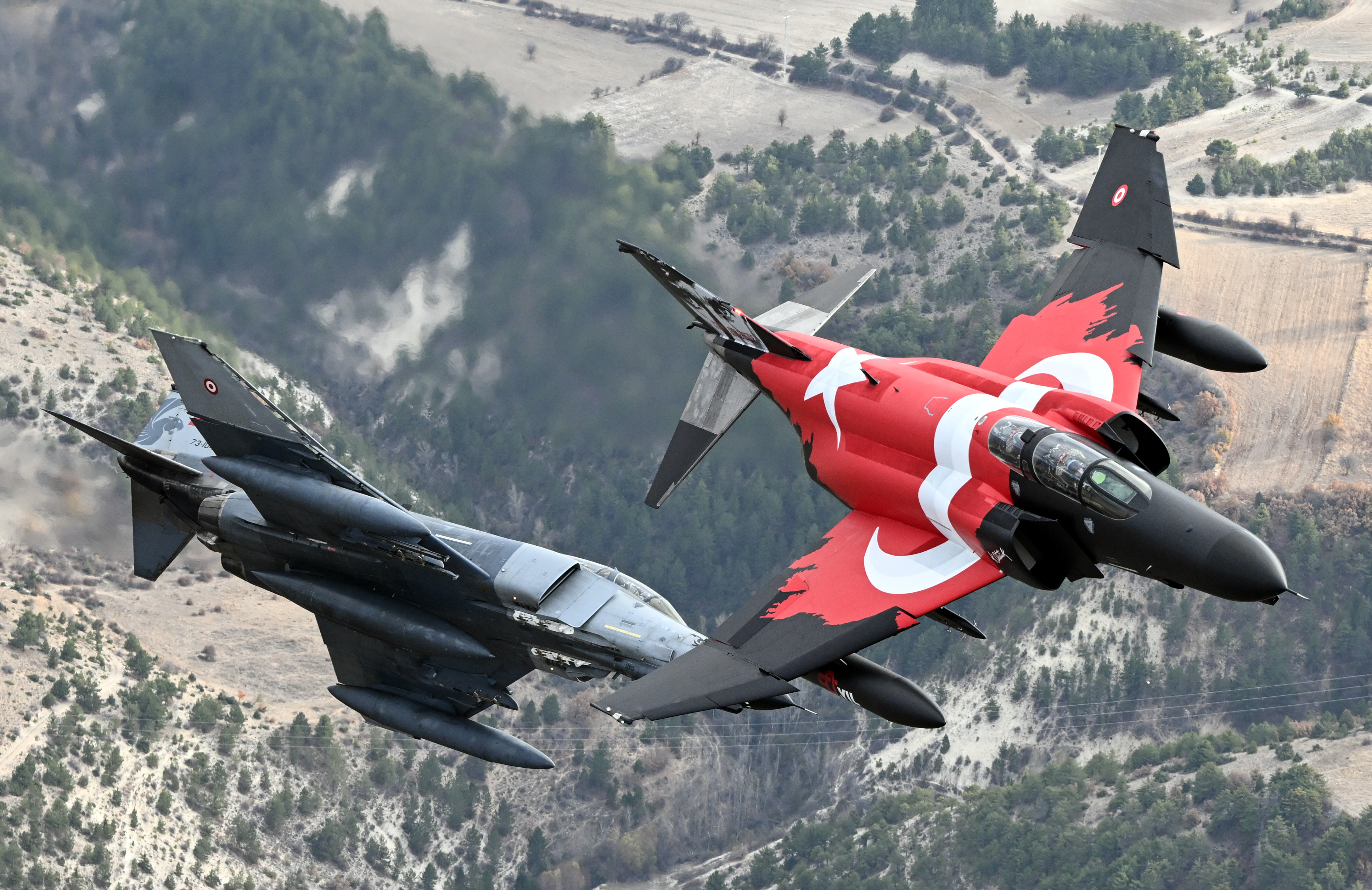

As of now, it’s conceivable that the Turkish F-4Es might remain active until around 2030, at which point they could be replaced by the TF Kaan next-generation fighter. At the same time, there remain questions about the viability of this project, especially when it comes to sourcing engines and, even if it all goes to plan, the Kaan won’t begin to enter service until 2030, at the earliest.
With this situation very likely in mind, Ankara has meanwhile also made efforts to acquire interim equipment, which would likely also displace the F-4Es.
Earlier this year, U.S. President Joe Biden signaled that he wanted lawmakers to approve the sale of additional F-16s to Turkey “without delay.” Soon after, the U.S. State Department approved a possible Foreign Military Sale to Turkey of 40 new F-16C/D Block 70 fighters, plus the upgrade of 79 existing aircraft to F-16V configuration.
Turkey already operates an enormous F-16 fleet but efforts to acquire more had long been stalled. That also prompted Ankara to look elsewhere, including potentially buying Eurofighter Typhoons. More recently, there have even been suggestions that the F-35 could be back on the table for Turkey, although only if it agrees to give up its controversial S-400s once and for all.
To date, however, no deal has been signed for additional F-16s or Typhoons, meaning that Turkish skies will continue to reverberate to the sound of F-4s for some time to come.
Contact the author: thomas@thewarzone.com
